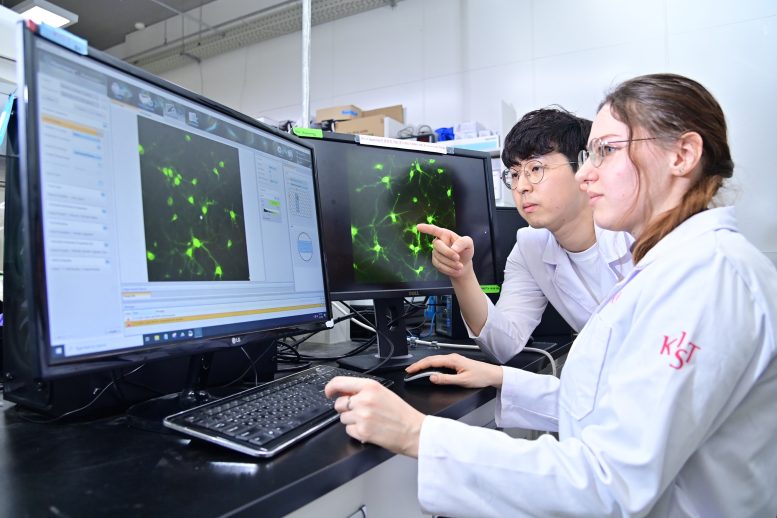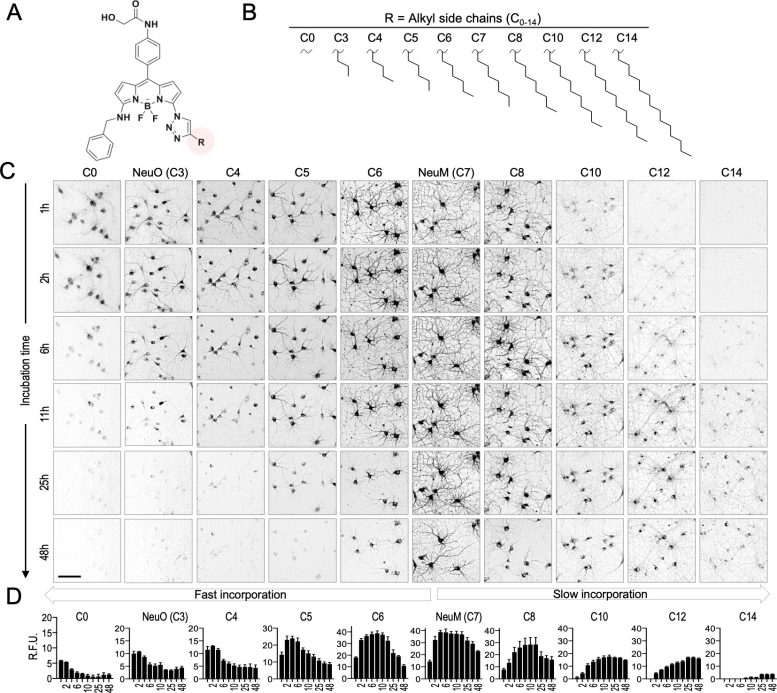Scientists Discover Key to Unlocking the Secret of Degenerative Brain Disorders Like Alzheimer’s

The development of NeuM, a new neuronal marking technology, represents a major advance in the fight against neurodegenerative diseases. By enabling selective labeling and high-resolution imaging of neuronal membranes, NeuM facilitates the detailed study of neuronal structures and their changes over time. This technology promises to be a critical asset in understanding and developing treatments for diseases like Alzheimer’s, offering hope for advancements in the research and treatment of neurodegenerative diseases. Credit: SciTechDaily.com
Scientists have developed “NeuM”, a neuronal labeling technology allowing detailed observation of neuronal structure. Successful monitoring of neuronal changes for up to 72 hours.

Researchers in Dr. Kim Yoon-kyung’s team at KIST use next-generation neuronal labeling technology, “NeuM,” to visualize neurons in real time and examine high-resolution images. Credit: Korea Institute of Science and Technology
Neurons continually change their structure and function to transmit information from the sensory organs to the brain, thereby regulating thoughts, memories, and behaviors. Therefore, to overcome degenerative neurological diseases, it is essential to develop techniques to selectively label living neurons for real-time monitoring. However, current gene- and antibody-based labeling technologies, commonly used to observe neurons, suffer from poor
” data-gt-translate-attributes=”({“attribute”:”data-cmtooltip”, “format”:”html”})” tabindex=”0″ role=”link”>precision and difficulty in long-term monitoring due to their dependence on specific gene expression or proteins.
Benefits and Capabilities of NeuM
NeuM, developed by the research team through molecular engineering of neuronal cells, has excellent binding affinity with neuronal membranes, enabling long-term tracking and high-resolution imaging of neurons. NeuM’s fluorescent probes bind to neuronal membranes using the activity of living cells, emitting fluorescent signals upon excitation by specific wavelengths of light. This visualization of neuronal membranes allows detailed observation of neuronal terminal structures and high-resolution monitoring of neuronal differentiation and interactions.

Molecular design for selective labeling of neuronal membranes. Credit: Korea Institute of Science and Technology
NeuM, as the first technology to stain cell membranes by endocytosis in living neurons, exhibits selective reactivity toward living cells, excluding dead cells without internalization. Additionally, the research team managed to extend the neuron observation time from just 6 hours to 72 hours, making it possible to capture the dynamic changes of living neurons over an extended period of time in response to environmental changes.
NeuM is expected to provide information on the research and development of therapies for degenerative neurological diseases, for which there are currently no cures. These diseases, including Alzheimer’s, result from neuronal damage due to the production of toxic proteins such as amyloid and the influx of inflammatory substances. The precise observation of neuronal changes by NeuM can effectively facilitate the evaluation of candidate therapeutic compounds.
Dr. Kim said: “NeuM, developed this time, can distinguish aging and degenerative neurons, becoming a crucial tool for elucidating the mechanisms of degenerative brain disorders and developing treatments. » He added: “In the future, we plan to refine NeuM for even more precise analysis of neurons by engineering fluorescence wavelengths to distinguish colors such as green and red. »
Reference: “NeuM: a selective neuronal probe integrates into living neuronal membranes via enhanced clathrin-mediated endocytosis in primary neurons” by Yoonsik Sung, Lizaveta Gotina, Kyu Hyeon Kim, Jung Yeol Lee, Seulgi Shin, Hira Aziz , Dong Min Kang, Xiao Liu, Na-Kyeong Hong, Hong-Guen Lee, Jun-Seok Lee, Hyeyeong Ku, Cherlhyun Jeong, Ae Nim Pae, Sungsu Lim, Young-Tae Chang and Yun Kyung Kim, December 7, 2023, Angewandte Chemie International Edition.
DOI: 10.1002/anie.202312942
This research was supported by the Ministry of Science and ICT (Minister Lee Jong-ho) through KIST Major Projects and the Dementia Overcoming Project (RS-2023-00261784).
News Source : scitechdaily.com
Gn Health




